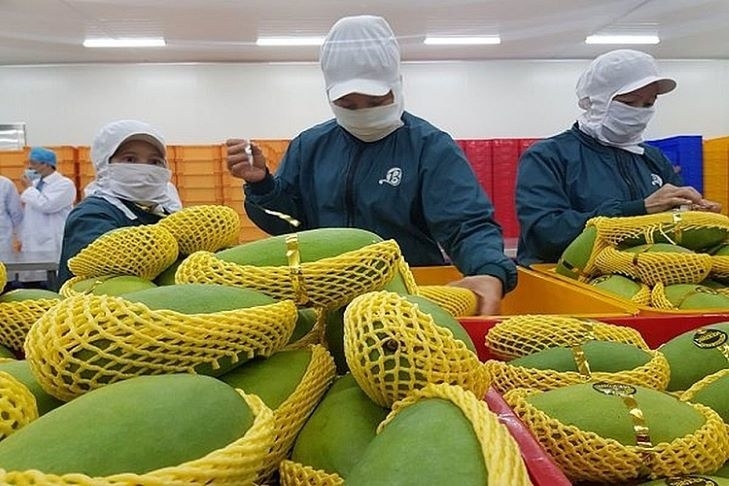Upon addressing the event, Dang Phuc Nguyen, general secretary of the Vietnam Fruit and Vegetable Association (Vinafruit), emphasised that with a total cultivation area spanning about 1.2 million hectares, Vietnam boasts the potential to become one of the most important fruit exporting countries in the world in general, with a particular focus on China.
Currently, the northern neighbour represents the world's largest fruit and vegetable consumer market, importing over US$17 billion of fruits and vegetables annually, accounting for more than 15% of the world's total export output. Indeed, recent years has seen Chinese import turnover grow by 10% annually.
At present, Vietnam has officially exported 11 types of fruits to this market, such as durian, jackfruit, dragon fruit, banana, mango, longan, lychee, watermelon, rambutan, mangosteen, and passion fruit, along with sweet potatoes and black ginseng.
Statistics released by the Vinafruit highlight that Vietnamese fruit and vegetable export turnover last year reached US$5.6 billion, of which China alone saw turnover of US$3.63 billion, accounting for nearly 65% of total Vietnamese fruit export revenue.
This year the country’s fruit and vegetable sector is expected to rake in around US$7.5 billion, with China making up a turnover of over US$5 billion, duly accounting for about 70% of the fruit and vegetable export volume.
However, Nguyen pointed out that the Chinese market also poses many challenges for Vietnamese enterprises, particularly as local goods have to compete against rivals from Thailand, Malaysia, the Philippines, Cambodia, and Australia, as well as some countries in South America such as Peru and Ecuador.
In particular, some types of fruit and vegetables such as bananas, dragon fruit, lychees, longans, grapefruit, ginger, and garlic are also required to compete with domestic Chinese goods.
Most notably, China's food safety standards are increasingly strict and changing, thereby requiring Vietnamese enterprises to stay updated and meet their stringent requirements.
Insiders therefore recommend local businesses strive to improve product quality, build brands, and implement origin traceability in a bid to make inroads into the market in a sustainable manner.























